Despite South Korea’s sinking Sewol, ferries are still safer than air travel
A ferry carrying 470 passengers off the coast of South Korea is slowly sinking, having capsized early this morning. Accounts from the scene are grim, with four dead, 55 injured and around 280 people still missing (reports on exact numbers vary). Though what caused the ship—called the Sewol—to capsize is unclear, the boat began listing violently after what those onboard reported as a loud “thumping sound” (paywall) at around 9am. Many of the travelers were high school students on a school trip to Jeju island, where the ship was headed:
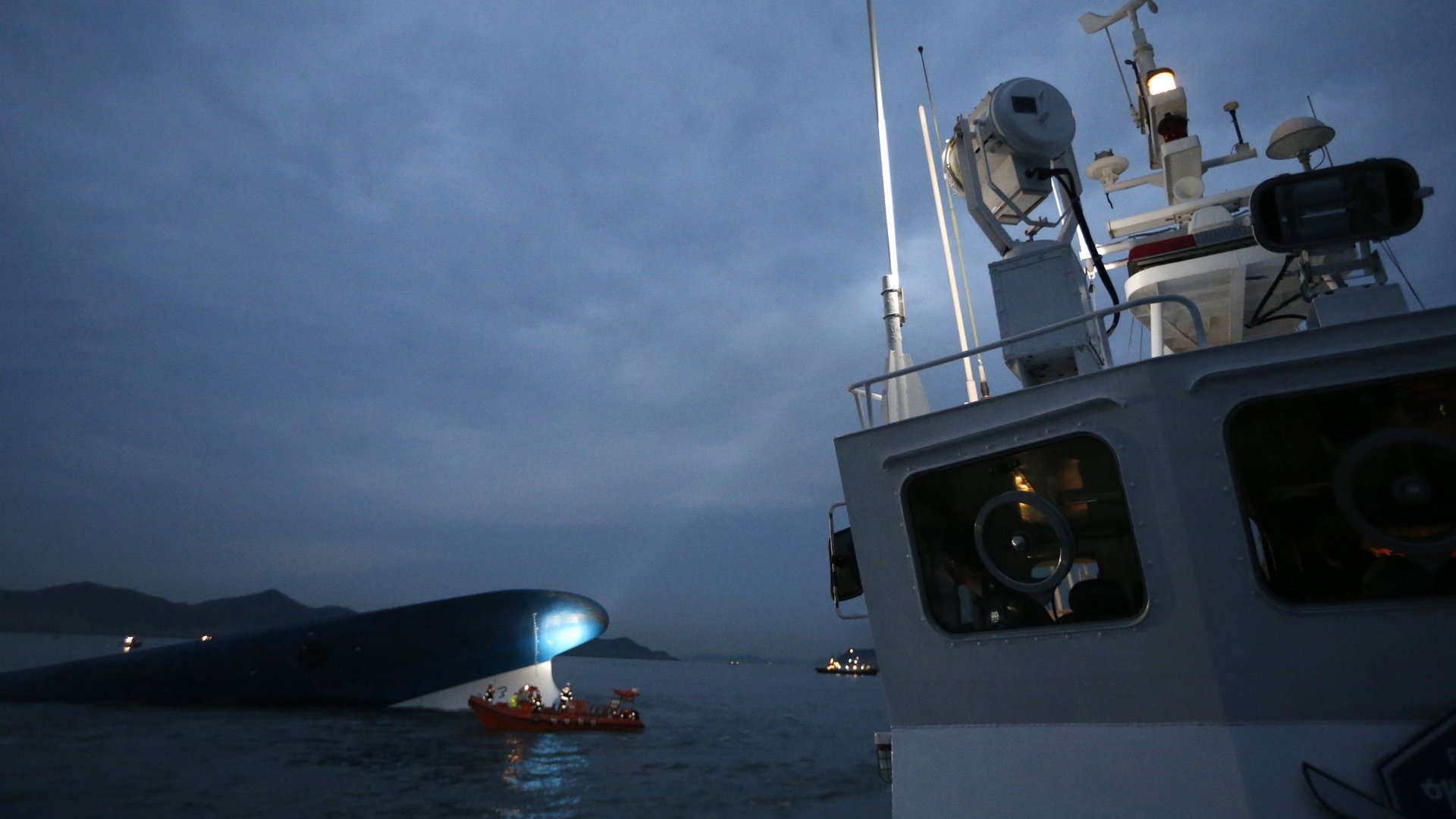

A ferry carrying 470 passengers off the coast of South Korea is slowly sinking, having capsized early this morning. Accounts from the scene are grim, with four dead, 55 injured and around 280 people still missing (reports on exact numbers vary). Though what caused the ship—called the Sewol—to capsize is unclear, the boat began listing violently after what those onboard reported as a loud “thumping sound” (paywall) at around 9am. Many of the travelers were high school students on a school trip to Jeju island, where the ship was headed:
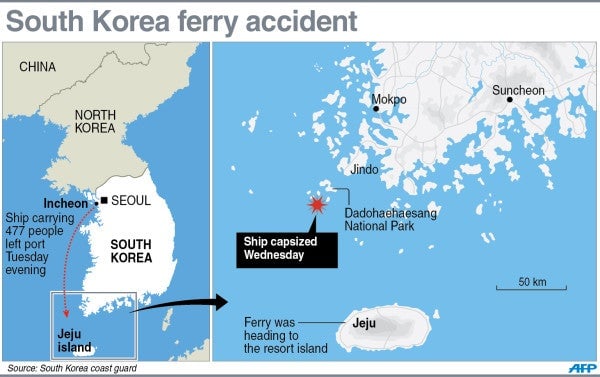
A blitz of lifeboats and helicopters to the sinking ship have helped rescue 180 of the 462 passengers. But those missing are assumed to be stuck in the now submerged Sewol, in the freezing darkness. There’s enough oxygen to sustain life for another 72 hours, say sources, though divers have so far been unable to locate anyone. Hopefully, rescue efforts will prove more successful in the morning.
The higher number of passengers means that the Sewol tragedy has the potential to be even deadlier than the Malaysian Airlines Flight 370 crash, which is suspected to have killed 239 people. That’s roughly consistent with the trend that appears when you compare airline and ferry accidents: a fatal ferry accident tends to be deadlier than an aircraft crash, as you can see in the chart below of average fatalities per accident, compiled from worldwide media reports of ferry and airplane accidents aggregated at mapreport.com:
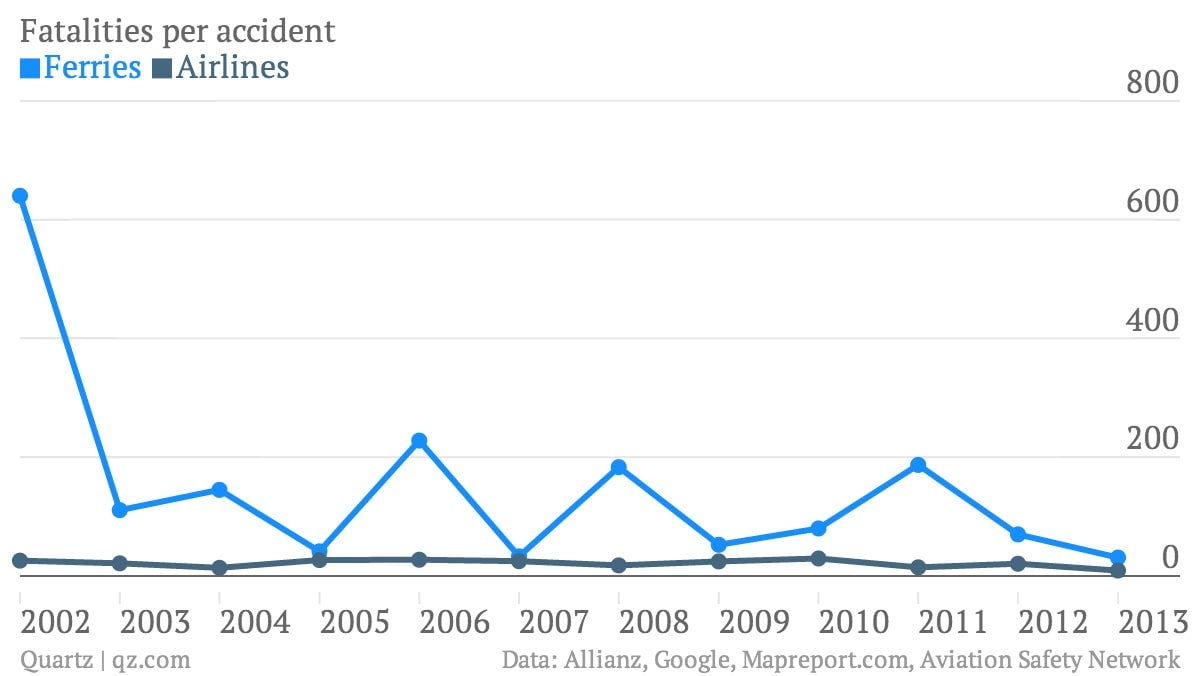
But overall, ferry travel is less dangerous than flying. Air travel is often pronounced the “safest” mode of transport—and indeed, it’s safer than walking or taking a train—but that clearly isn’t counting travel by ferry. From 2002 to 2013, an average of 565 people around the world died each year in ferry accidents, compared with 715 on airplanes. Here’s the trend in fatalities from ferry accidents (which counts both sea and freshwater transport), again from worldwide media reports:
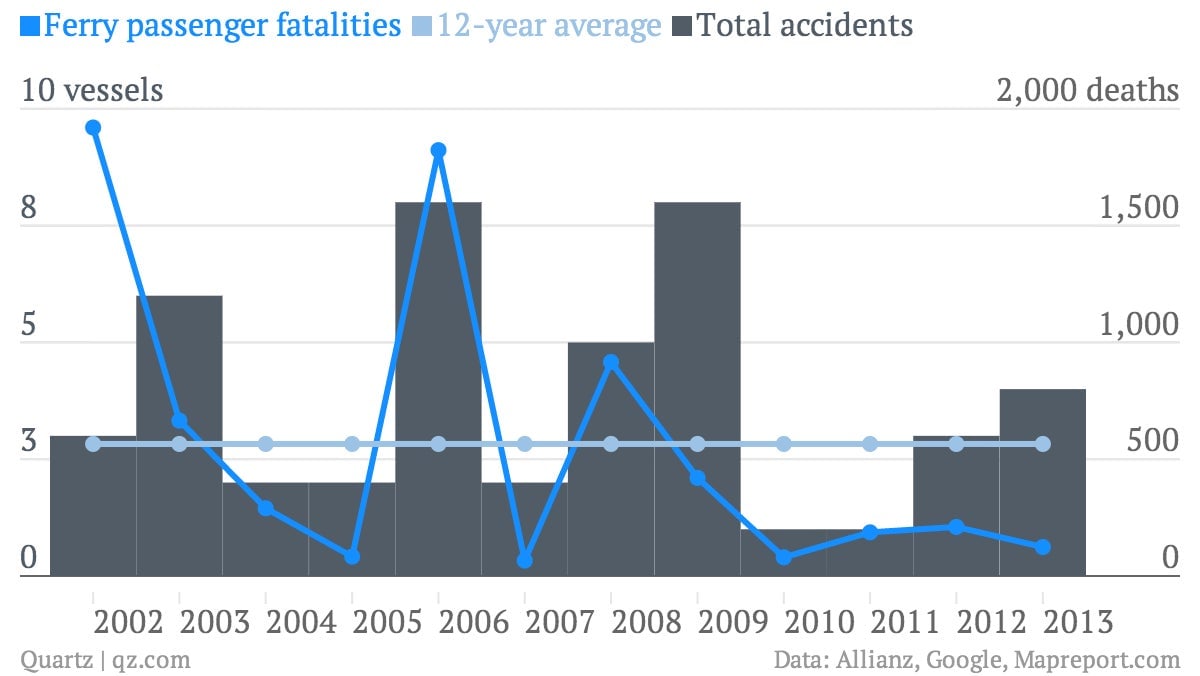
And here’s what the airline trend looks like:
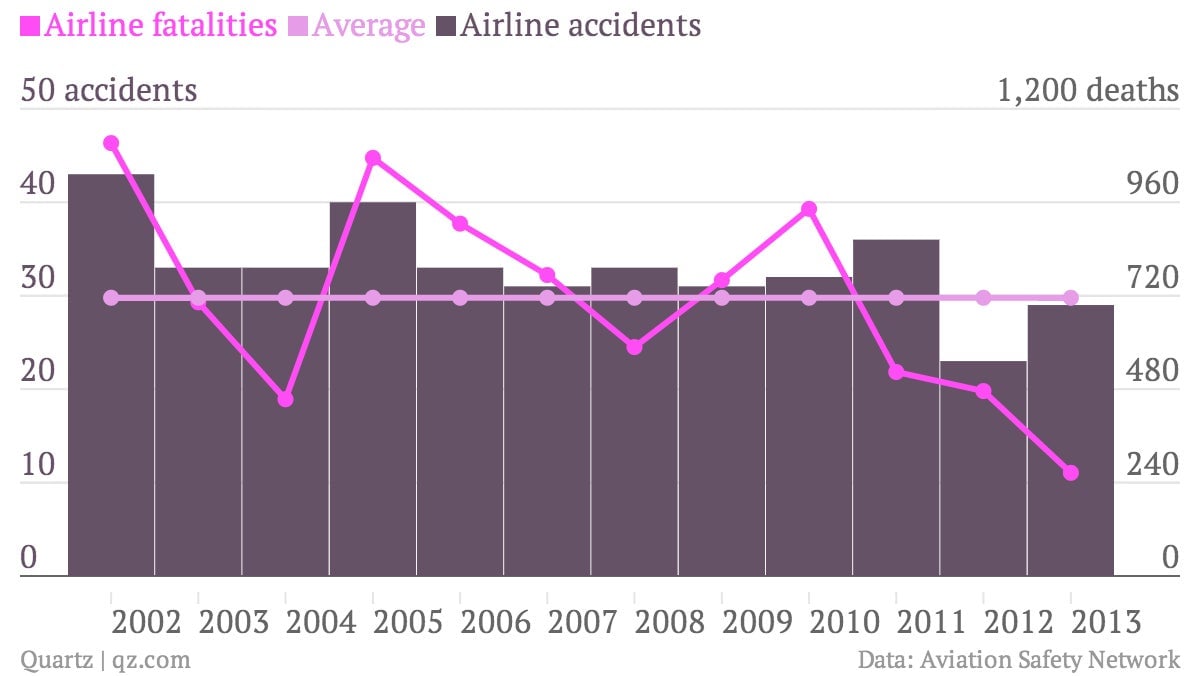
Sure, slightly fewer people travel by ferry each year than by plane—around 2.1 billion annually, versus 2.3 billion for commercial airliners. But traveling by ferry still has a lower accident rate.

That number includes ferry disasters in countries such as Bangladesh and the Philippines, were ferries sink with appalling regularity. While Bangladesh’s often result from overcrowded river ferries, the Philippines’ vulnerability to typhoons appears to be behind many of its accidents. Other ferry disaster hotspots include Indonesia and Tanzania, where ferries to Zanzibar occasionally founder.